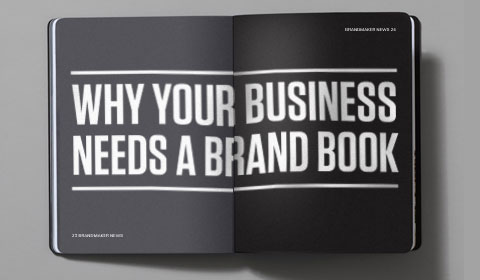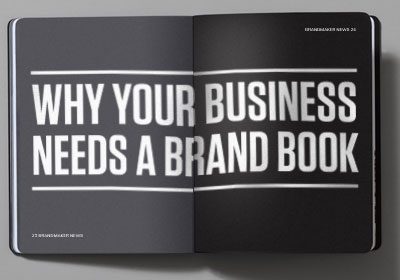We’ve all seen it. Someone hands you a business card with a great logo, but when you go to check out their website (or other marketing vehicles) they don’t match the look or quality. Situations like this are why understanding the importance of having a strong, consistent brand identity is essential in today’s marketplace.
Making sure that your marketing tools have the same overall look and feel not only reinforces your credibility with your customers, but it also makes you stand out from the crowd. So how do you make sure your brand stays consistent? Well, this is where having a well-crafted Brand Book comes into play.
What Is A Brand Book?
A Brand Book (also commonly referred to as a “brand guidelines,” “brand standards,” or a “style guide”) is essentially a set of rules that explain how your brand works. These guidelines typically include basic information such as:
– An overview of your brand’s history, vision, personality and key values.
– Logo set-up specifications — including tagline usage
– Visual examples of your correct and incorrect logo treatments
– Your chosen color palette
– Your chosen type style(s)
– Business card and letterhead design
If you’re just starting out and you only require a few key marketing tools at this point, focusing on the above areas may be enough. However, to make sure all your bases are covered, you may choose to go with a more detailed Brand Book that also includes:
– Photography style
– Supporting graphic elements
– Design layouts and grids
– Social media profile page applications
– Brochure/flyer layout options
– Website layout
– Signage specifications
– Advertising treatments
– Merchandising applications
– Copywriting style (a.k.a. “tone of voice”)
– Editorial guidelines
These brand rules should be flexible enough for designers to be creative, but rigid enough to keep your brand easily recognizable and stylistically consistent. Occasionally situations will call for rules to be bent — but never broken. Continuity is key, especially if you need the brand to extend across multiple media platforms.
When Should You Have A Brand Book Developed?
Ideally, your brand book should be developed by an experienced graphic designer or marketing agency at the same time your logo is being designed. This will help to ensure that all of your promotional channels are aligned — no matter who develops them for you in the future.
Even if you’ve already had a logo designed, you can still hire a designer (preferably the same one who created your logo) to develop a Brand Book that flows well with your existing logo.
Your finished Brand Book should be a user-friendly PDF document that can be conveniently provided to any contact that needs to better understand your brand. Some businesses also include their brand guidelines on their website or via an online link that is only accessible to those designated to view them.
How To Use A Brand Book
When promoting your brand you often need to hire third parties (i.e, advertisers, designers, photographers, printers, etc.) to help convey your company’s image, message and services/products. But there’s a strong chance that these vendors do not fully understand the brand.
By meeting with them to discuss your objectives and supplying them with a copy of your Brand Book, they will be better prepared to create tools that work as a cohesive unit.
Here’s a reminder of what often happens when you DON’T provide your vendors with brand guidelines:
– Inappropriate use of your logo and tagline
– Incorrect used of colors, typefaces and design elements
– A lack of cohesion in the handling of the logo and overall design that gives a piece a cheap or confusing appearance
– Inconsistent messaging that result in poor sales
The Bottom Line
It’s important to understand that your logo is NOT your brand, but rather a key component in your overall brand strategy. How that logo is rolled out into each aspect of your business operations is really where the branding magic happens.
By developing Brand Book in conjunction with your logo, you can help to ensure that all of your customer touch-points (i.e, brochures, advertising, invoices, Twitter page, etc) are carried out in a high-impact, consistent manner — no matter which designer, agency, photographer, or advertiser you hire to create your materials.
7 Great Brand Book Examples
Easy.com
Ford
Earth Gear
Burma + Shave
Boy Scouts of America
Strobe
North Carolina State University

